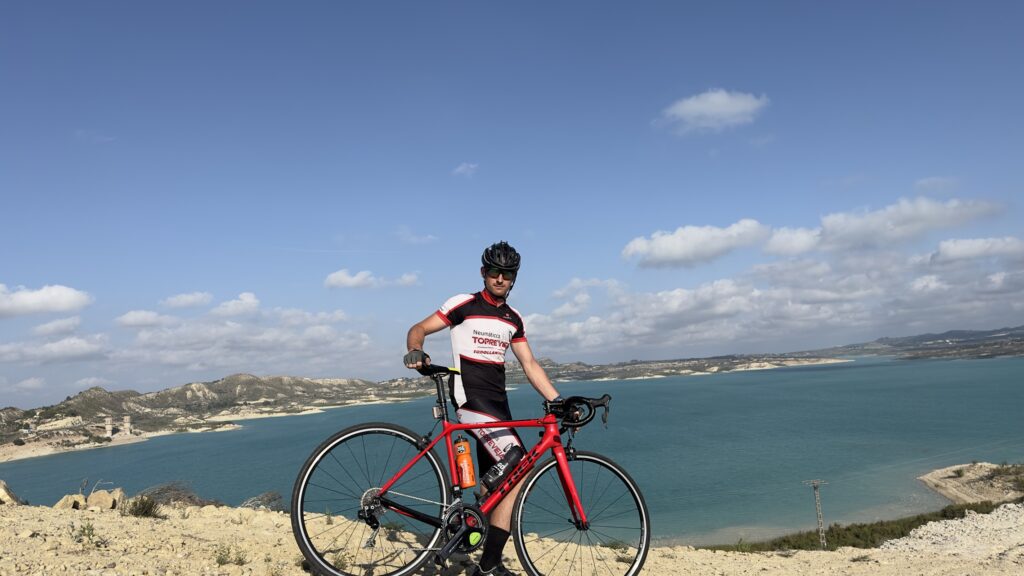Background
The first studies of the La Pedrera Reservoir began in September 1967 when the Centro de Estudios Hidrográficos (CEH) drew up a geological study regarding the viability of La Pedrera Reservoir. The latter was determined, but, for its construction, it would be necessary to solve a series of problems – and the need for deeper studies. New campaigns were carried out regarding the geological-geotechnical aspects and, in the month of March 1970, the Public Works Geological Service issued the Preliminary Report on the La Pedrera reservoir and works, next to Orihuela, Bigastro (Alicante). This report was more optimistic than the previous one, stating the viability of building the reservoir and hoping to evaluate, in an approximate way, the economic cost of the works for the correction of the land that would need to be carried out in the area of the left shoulder and the hills on the right bank.
The first project for La Pedrera Reservoir was approved on 2nd May 1973, and the bidding process was immediately opened for the competitive tendering. The works began in July 1973, and a term for completion of thirty six (36) months was established, having to be completed in August 1976. But things did not go as smoothly as initially planned and it was necessary to extend the term on four occasions:
- 18th June 1976 an extension of one year was requested, until 31st August 1977.
- 17th June 1977 an additional extension of one year was requested again, until 31st August 1978.
- 24th November 1978, the previous term having been met, a further extension of another year was requested, until 31st December 1979.
- Finally, on 4th December 1980 an extension of four months was requested, until 4th May 1981.
The project approved in May 1973 would not be the final one since, during the course of the dam construction, it was necessary to process two Amended Projects and a Complementary Project.
Provisional acceptance of the works took place on 20th April 1983, while the provisional settlement was a month later, that is, in May 1983.

When the civil works were well under way, Project 03/77 on the Campo de Cartagena Canal Intake was implemented, dealing with the hydromechanical equipment which was going to be installed for the water intake. These works were adjudicated on 20th April 1978 with the term for completion being 5th January 1980. The works began on 4th July 1978 and they suffered a process similar to the strictly civil ones: three successive extensions in the term, an Amendment I, three price revision reports and a fourth extension for completion until 9th August 1981. This last term was met and the provisional acceptance took place on 8th February 1983 and the Act approved on 25th March 1983.
When the need arose to build La Pedrera dam, two places were studied regarding its possible location. The choice of the latter depended on a series of factors related with the geological-geotechnical nature of the substratum, the capacity of the reservoir being created, the dimensions of the dam and the viability and economic cost of the construction. The first place that was studied was the one that permitted greater reservoir capacity, which was located in the ravine situated in Arroyo Grande between Cabezo Gordo – left bank- and Cabezo del Moro, immediately downstream from its confluence with Rambla de Alcoriza. But the geotechnical conditions of the land ruled out this location. The geological evolution of the area had created an anticline of loamy material covered in clays coming from its decomposition, and protected by strata of softer rocks -limestone, conglomerates and sandstones – which had been levelled over the years, producing an inversion of the relief, in such a way that the loams of the storage area upstream of the dam are bordered by elevations of conglomerates and sandstones. These conglomerates transversely cross the first downstream boundary for the storage area proposed, and so their high permeability made it advisable to transfer the dam downstream, to Rambla de Alcoriza in the area formed by Cerro de La Pedrera and Cabezo del Moro that, although this would mean a reservoir of smaller capacity, would be sufficient, the permeability problems would be avoided and the length of the dam would be shortened.
The choice of the type of structure -concrete versus loose materials – was determined by the inadequacy of the loamy material -that loses its cohesive properties in contact with water – to support the loads transmitted by a concrete dam. Three alternative types of dams of loose materials were studied: homogeneous, rockfill with a central clay core and rockfill with facing. The final choice was the homogeneous dam due to the presence of quarries in the vicinity of the location -clays and bluish grey loams in the storage area upstream of the dam- and the non-existence of water in the immediate surroundings – necessary in great volumes for compacting the rockfill – and which would have to be transported from great distances.
Data Source: https://www.chsegura.es/en/cuenca/infraestructuras/embalses/La-Pedrera-Reservoir-00001/

Comments